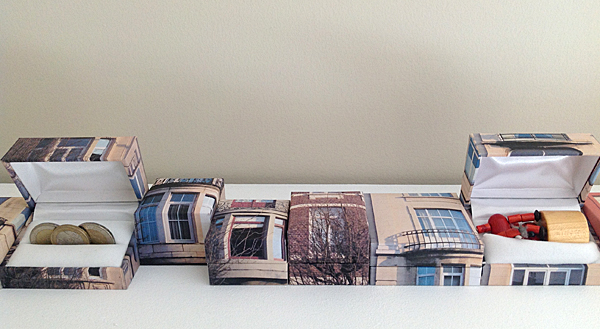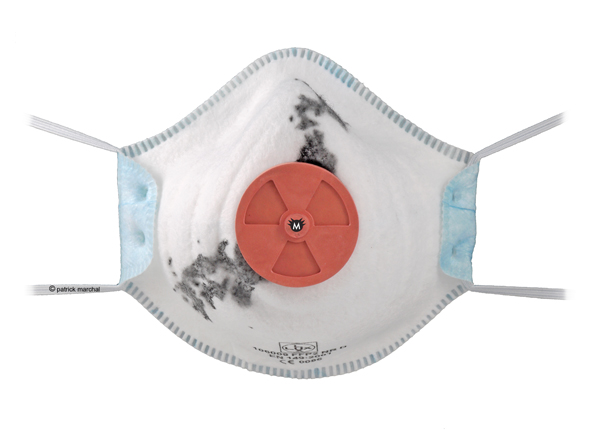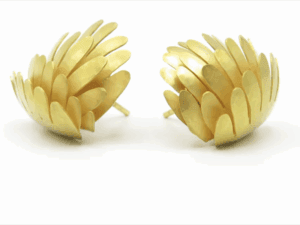
I like the way Françoise Vanderauwera, the owner of the gallery, talked about the “transfer of knowledge” as what happens between student and teacher. It has a Buddhist ring to it. This young gallery has a fascinating program, which is apparent in the recent interview with Françoise by Kellie Riggs for the “Dealer Profiles” section on the AJF website.
Also, stay tuned for TWEEX 2 from October 18–November 23, 2013 featuring Institut des Arts et Métiers, Brussels, Académie des beaux arts, Arlon, and MAD Faculty, Hasselt.
Susan Cummins: Françoise, please explain the TWEEX project and the reasons why you initiated it.
Françoise Vanderauwera: TWEEX is a project about the transfer of knowledge in Belgian contemporary art jewelry. This kind of transfer for this young artistic discipline has always existed in Belgium. But due to political and community reasons, it has not been widely promoted, and there are other reasons as well. This project shows the excellent work of our masters and their students spanning more than two generations. It aims, thanks to a complete and clear analysis, to fill the gap and to ensure our legitimate place on the international scene. This project also attempts to understand Belgian contemporary art jewelry better, where it comes from and where it goes.

Françoise Vanderauwera: TWEEX is a combination of two words: “tweets” (social connection) and “twix” (fingers—we cannot imagine one without the other). TWEEX is therefore a new expression to quickly signify a vital connection in our speedy times of transmission, relations, exchanges, and sharing. TWEEX, for Belgian contemporary art jewelry, is a closely welded heritage that stetches from the north to the south of our country and which should be now passed on at a contemporary speed.
Why did you do it in conjunction with the nonprofit space Néon Atelier?
Françoise Vanderauwera: Bernard François—a mainstay of the art scene and founder of the avant-garde Brussels gallery Néon—is the curator for this exhibition and also a jeweler and teacher. He is a person who cannot be ignored in the history of contemporary art jewelry in Belgium. It is a great honor and pleasure to have Bernard François’s experience and know-how in such a big and original overview at a national level. I have also asked businesswomen to come and wear the jewels for the catalogue. They are good ambassadors, too.
Can you explain a bit about how you see the process of transmission from master professor to student? Can you give some examples? Do you see them passing on ideas or techniques or both?
Françoise Vanderauwera: There is no all-inclusive package for knowledge transfer. It is not only about passing on ideas or techniques. As explained by Anne Hustache, the art historian working on this project, it is also about “delivering minds and sharing passion.” In my view, it has actually a lot of parameters, which include a personal experience and always a precious flow. “If knowledge is not passed on, it dies.”

Personally, Max Gielis, a current teacher at the RHoK Academie in Brussels (which has a jewelry department) gave me the ability to observe new techniques and ideas, to see and understand … a great teacher!
Do you think the young artists you are showing are interested in expressing something uniquely Belgian, or are they more interested in the international scene?
Françoise Vanderauwera: In addition to the work of the masters, we are showing pieces from confirmed artists or very promising young student artists from IATA Namur and Sint Lucas Antwerpen and also parure of 17 students who are studying industrial design at La Cambre in Brussels.
To name but a few:
Patrick Marchal (Belgium) has often shown his artworks abroad. They express subjects of our time, sometimes dramatically, with a particular sense of humor and with the perfect sense of detail that only a genius goldsmith can do.
After her studies at IATA Namur, Nelly Van Oost (France) completed a bachelor’s degree at the Massana School in Barcelona, Spain, and a master’s degree at the FH Trier University in Idar-Oberstein, Germany, to complete her scholarship outside Belgium.
According to Saskia van der Gucht, who is currently studying at Sint Lucas Antwerpen, alongside the basic training, her master Hilde De Decker aims to put her students in touch with the international scene.

At La Cambre, the young and future industrial designers (who are not all Belgian) are expressing their creativity following a unique but universal training process. Marianne Bernecker advocates a transversal approach to all the design disciplines, which draws on the language of plasticity and then rechannels it by concentrating on conception criteria that are specific to the design field concerned. As stipulated by Marion Beernaerts, the head teacher in charge, “The parure project is one of those topics entailing a search for strong, particular signs that ally the effects of matter to form and vice versa, providing the student with a crucible for the research and experimentation that go into the conception of any innovative industrial product.”

Some galleries, such as Galerie Marzee, have a tradition of showing student work regularly. Do you think you will repeat this show next year?
Françoise Vanderauwera: Yes and no. “Yes” because the TWEEX project involves three different exhibitions, and we are only showing the first one. TWEEX 2 and TWEEX 3 are planned for the end of 2013 and the beginning of 2014. And “no” because TWEEX shows master and student works from approximately 70 years of history!
You mentioned a catalogue. Can it be ordered through the gallery?
Françoise Vanderauwera: Yes. The TWEEX 1 catalogue is available through the gallery.
Thank you.





